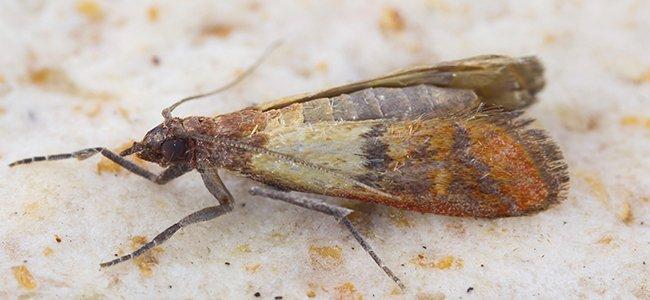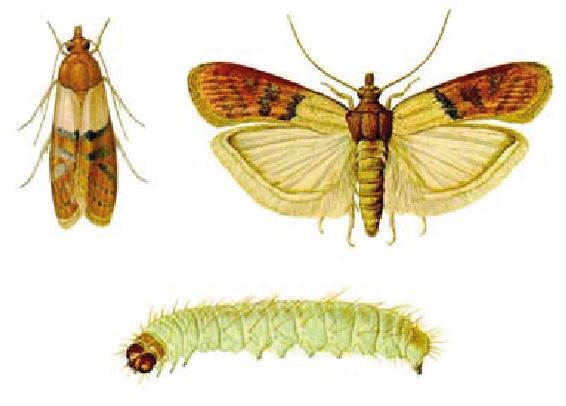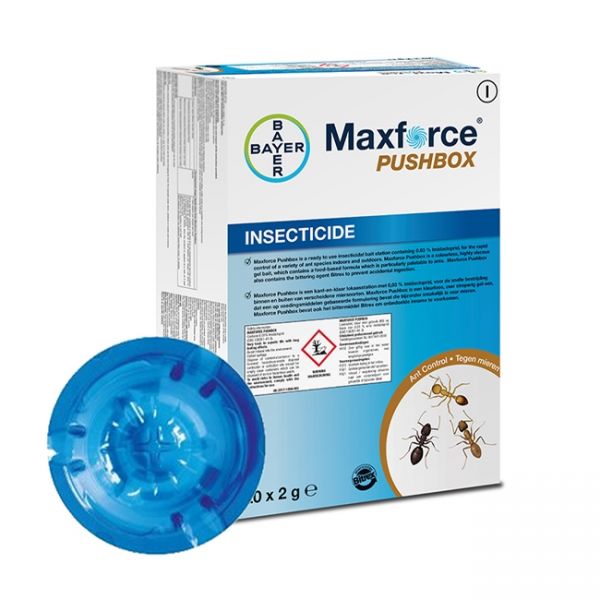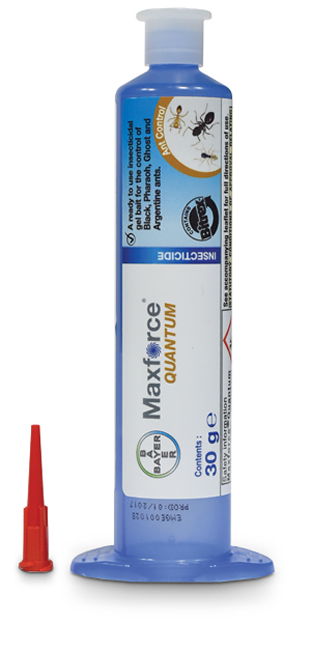Indian Meal Moth (Plodia interpunctella)
Indian Meal Moth (Plodia interpunctella)
 |
 |
Identification:
The adult moth has a wingspan of about 20 mm. The front wings are reddish brown on the outer twothirds and light greyish brown on the inner onethird. The head and thorax are reddish brown and the hind wings are grey. The larvae are cream in colour, with yellowishgreen or pinkish shades, and has a dark brown head. The larvae and pupa stages are often seen on walls and wall/ceiling junctions.
Biology:
Adult moths usually emerge, mate, and lay eggs at night. Females lay 60 to 400 eggs over a 20 day period. The eggs are laid individually or in groups on or around the infested material. Eggs hatch within 4 - 8 days and the hatching larvae immediately begin searching for food. Larvae maturity depends on temperature and food availability, and can take between 20 to 70 days. Mature larvae usually leave their food supply to pupate. The life cycle can occur in as few as 27 days or as long as 300 days. There are generally four to six generations a year.
Control:
Infestations in domestic or food storage situations can usually be traced back to a cereal or dried pet food source. Since these moths can infest so many types of food products, inspect thoroughly. There may be several infested products, discard any food that is infested. Infested areas should be thoroughly vacuumed paying particular attention to cracks and crevices, contents of the vacuum cleaner should be disposed of in an outside bin. Store new food products in sealed glass or plastic containers. After cleaning, treat the infested areas using a residual insecticide labeled for crawling/flying insects to ensure that all adult moth and larvae have been killed.
Products to control Indian Meal Moth:
|
Imidasect Ant Gel (35g tube) |
Maxforce Pushbox (20 x 2g) |
Maxforce Quantum Gel (30g tube) |



